THE CULTURE
The term “Harakbut” translates to “people” or “community” and was self-designated by the indigenous group in the 1980s.
This ancestral people inhabit the regions of Madre de Dios and Cusco in southeastern Peru.
Spanish chronicles highlight their resistance against the Inca conquest attempts. During the rubber boom era, the Harakbut suffered severe losses, with over 90% of their population decimated by diseases and violence. Later, with the arrival of Dominican missionaries, they came into permanent contact with the outside world.
The Harakbut are divided into seven subgroups: Arakbut, Arazaeri, Toyeri, Sapiteri, Kotsimberi, Kisamberi, and Wachiperi.
CULTURAL HERITAGE OF THE NATION
In August 2021, through Vice-Ministerial Resolution No. 000202-2021-VMPCIC/MC, the Ministry of Culture recognized the Rostro Harakbut Archaeological Site as Cultural Heritage of the Nation "for its great value and cultural significance."
This achievement was made possible thanks to nearly a decade of collaboration between the National Service of State-Protected Natural Areas (Sernanp) and the Executor of the Administration Contract of the Amarakaeri Communal Reserve (ECA Amarakaeri), which co-manage this protected natural area.


